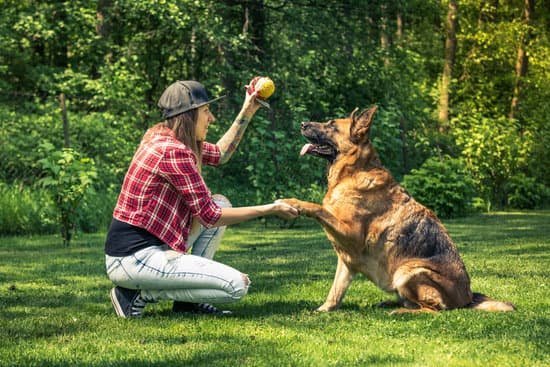Do dogs have to be crate trained? Crate training is an important aspect of dog behavior and training. It helps in managing a dog’s behavior, potty training, and ensuring their safety. There are many misconceptions about crate training, but when done correctly, it can be a positive experience for the dog. In this article, we will explore the concept of crate training and its importance in shaping a well-behaved and well-adjusted dog.
Crate training offers various benefits for dogs, including behavior management, potty training, and safety. When done properly, it provides a safe and comfortable space for your furry friend. It also helps in preventing destructive behaviors and gives your dog a sense of security.
Despite the many benefits of crate training, there are common misconceptions about it. Some people believe that it is cruel or that it can make dogs anxious or fearful. However, with the right approach and positive reinforcement, crate training can actually have a calming effect on dogs and provide them with a sense of security.
In the following sections of this article, we will discuss how to properly crate train a dog, including tips and best practices. We will also explore the different types of crates available and how to choose the right size and style for your dog. Additionally, we will provide specific considerations for crate training puppies, adult dogs, and senior dogs. Lastly, we will discuss alternative methods for confinement and training for those who may not prefer crate training for their dogs.
Benefits of Crate Training
Crate training can be incredibly beneficial for dogs and their owners. There are numerous advantages to crate training that can positively impact a dog’s behavior, as well as make the training process more efficient and effective. Some of the key benefits of crate training include:
- Behavior Management: Crate training can help with managing a dog’s behavior, especially when they are left alone at home. It provides a safe and secure space for them to be in, reducing the likelihood of destructive behavior or anxiety-related issues.
- Potty Training: Crates can aid in potty training by teaching dogs to hold their bladder and bowel movements for longer periods. This is particularly helpful for young puppies who are still learning proper bathroom habits.
- Safety: When used correctly, crates provide a safe environment for dogs, especially during times when they may be at risk of injury or getting into something harmful. For example, during travel or when there are hazardous items around the house.
Overall, crate training offers numerous benefits that not only make life easier for dog owners but also create a sense of security and comfort for the dog. Many misconceptions about crate training often lead people to question its effectiveness; however, when done properly and with positive reinforcement, it can be an incredibly valuable tool in shaping a dog’s behavior and ensuring their safety.
When considering whether or not to crate train your dog, it’s important to weigh the pros and cons based on your specific situation. Every dog is different, so what works for one may not work for another. Ultimately, it’s essential to understand that while crate training is not mandatory, it can provide many advantages for both you and your furry friend if done thoughtfully and lovingly.
Common Misconceptions
Crate training for dogs is often a topic of debate among pet owners, with many misconceptions surrounding the practice. One common misconception is that crate training is cruel and inhumane for dogs. However, when done correctly, crate training can actually provide a safe and comfortable space for your dog, offering them a sense of security and privacy.
Understanding the Purpose of Crate Training
It’s important for dog owners to understand that crate training is not about confining the dog in a small space against their will. Instead, it’s about creating a positive association with the crate as a den-like space where the dog can relax and feel secure. When introduced properly, dogs often view their crates as their own personal sanctuary within the home.
Dispel the Myths
Another misconception about crate training is that it leads to separation anxiety in dogs. In reality, when used appropriately, a crate can actually help prevent separation anxiety by providing a safe and familiar environment for the dog when left alone. Additionally, some people believe that crate training is only necessary for puppies; however, even adult dogs can benefit from being properly trained to enjoy spending time in their crates.
By addressing these common misconceptions about crate training and providing accurate information on its benefits and proper implementation, pet owners can ensure that their dogs have positive experiences with crate training. Ultimately, when done correctly and with patience, crate training can be an effective tool for managing behavior and providing comfort and safety for our canine companions.
How to Crate Train
Crate training is an essential part of ensuring that your dog is well-behaved and comfortable in your home. While some pet owners may wonder, “Do dogs have to be crate trained?” the answer is that crate training can be highly beneficial for both you and your furry friend. Here’s a step-by-step guide on how to properly crate train a dog, including tips and best practices:
1. Introducing the Crate: Start by introducing your dog to the crate in a positive and gradual manner. Place blankets or bedding inside the crate to make it cozy and inviting for your dog. Leave the door open and allow your dog to explore the crate at their own pace.
2. Feeding in the Crate: To create a positive association with the crate, try feeding your dog their meals near or inside the crate. This will help them view the crate as a place of comfort and safety.
3. Gradual Confinement: Once your dog is comfortable entering the crate, you can start closing the door for short periods of time while they are inside. Stay nearby and offer reassurance to help them feel secure.
4. Time Alone in the Crate: As your dog becomes more accustomed to the crate, gradually increase the amount of time they spend alone in it. This can help prevent separation anxiety and prepare them for times when they need to be confined, such as during travel or vet visits.
5. Avoiding Punishment: It’s important to never use the crate as a form of punishment for your dog. The crate should always be associated with positive experiences and should serve as a safe space for your pet.
6. Consistency is Key: Consistency is crucial when it comes to crate training. Stick to a regular schedule for letting your dog in and out of the crate, especially during potty training or bedtime.
By following these steps and incorporating these best practices, you can effectively crate train your dog and provide them with a sense of security and comfort within their own personal space. Remember that every dog is different, so be patient and understanding as you work through this process together.
Choosing the Right Crate
When it comes to crate training your dog, choosing the right crate is essential for their comfort and safety. There are several different types of crates available on the market, each with its own advantages and drawbacks. It’s important to consider the size and style of the crate that will best suit your dog’s needs.
Types of Crates
There are three main types of crates: wire crates, plastic crates, and soft-sided crates. Wire crates are popular because they provide good ventilation and visibility for your dog. Plastic crates offer more privacy and can be cozier for dogs who prefer a den-like environment. Soft-sided crates are lightweight and portable, making them great for travel or temporary use.
Choosing the Right Size
The size of the crate is crucial for your dog’s comfort. A crate should be large enough for your dog to stand up, turn around, and lay down comfortably. However, it shouldn’t be too big, as this can defeat the purpose of creating a den-like environment that promotes a sense of security.
Considering Your Dog’s Needs
It’s important to take into account your dog’s specific needs when choosing a crate. For example, if you have a high-energy or anxious dog, a wire crate with open sides may not provide enough security or privacy. On the other hand, a soft-sided crate may not be suitable for a chewer or an escape artist.
When considering whether dogs have to be crate trained, it’s important to understand that choosing the right crate plays an integral role in successfully introducing this training method to your furry companion. By considering factors such as type, size, and your dog’s individual needs, you can ensure that their experience with crate training is positive and beneficial.
Crate Training for Different Age Groups
Crate training is a valuable tool for dog owners, but the approach to crate training can vary based on the age of the dog. When it comes to puppies, crate training is essential for teaching them bladder control and preventing destructive behavior when unsupervised.
Puppies have a lot of energy and curiosity, so a crate can provide them with a safe space while their owners are away. It’s important to ensure that the crate is properly sized for a puppy, allowing enough room to stand up, turn around, and lie down comfortably.
Adult dogs can also benefit from crate training, especially if they have not been previously trained or if they have behavioral issues such as separation anxiety. For adult dogs, crate training can provide a sense of security and comfort, similar to how a den would in the wild. When introducing an adult dog to crate training, it’s important to do so gradually and positively so that the dog views the crate as a positive space rather than punishment.
Senior dogs may also benefit from crate training under certain circumstances. While some senior dogs may already be accustomed to crates due to previous training or experiences, others may need new introduction strategies due to physical limitations or anxiety related to aging. For senior dogs with medical conditions requiring restricted movement or monitoring at night, crate training can help provide a safe environment.
It’s important to note that while age impacts the approach to crate training, it is never too late to start crate training with a dog. Whether you have a puppy, adult dog, or senior dog; proper introduction and positive reinforcement are key factors in successful crate training.
| Age Group | Considerations for Crate Training |
|---|---|
| Puppy | Teach bladder control and prevent destructive behavior |
| Adult Dog | Provide security and comfort; gradual introduction is key |
| Senior Dog | New introduction strategies may be needed due to physical limitations or anxiety related to aging |
Alternatives to Crate Training
Crate training is a popular method for dog owners to train and confine their pets, but it is not the only option available. Some dog owners may wonder, do dogs have to be crate trained? The answer is no; while crate training can be beneficial for many dogs, there are alternative methods for confinement and training that can also be effective.
One alternative to crate training is using baby gates or playpens. These can create a safe and confined space for your dog without the use of a crate. Baby gates can be used to block off certain areas of the house, such as a kitchen or laundry room, allowing your dog free roam within that space. Playpens provide a larger enclosed area for your dog to move around in while still limiting their access to the rest of the house.
Another alternative to crate training is using positive reinforcement and obedience training to teach your dog boundaries and behavior expectations. This method involves consistent training and rewarding good behavior with treats or praise. By setting clear rules and boundaries for your dog, you can effectively manage their behavior without the need for a crate.
Some dog owners may also opt for dog-proofing their home as an alternative to crate training. This involves removing any potential hazards or valuable items from reach, securing trash cans, and providing plenty of toys and activities to keep your dog entertained in a safe environment.
Ultimately, whether or not you choose to crate train your dog or use alternative confinement methods depends on your individual pet’s needs and behaviors. It’s important to consider your dog’s temperament, age, and specific circumstances when deciding on a training method.
| Alternative Methods | Description |
|---|---|
| Baby Gates/Playpens | Create a safe confined space without using a crate. |
| Positive Reinforcement/Obedience Training | Teach boundaries and behavior expectations through consistent training. |
| Dog-Proofing Home | Remove potential hazards and secure belongings in the house. |
Concluding Thoughts
In conclusion, crate training can be a valuable tool for dog owners in managing their pet’s behavior and ensuring their safety. While some may question whether dogs have to be crate trained, the benefits of this practice cannot be overlooked. From assisting with potty training to providing a safe space for the dog, crate training can greatly improve the overall well-being of your furry friend.
Additionally, it is important to address common misconceptions about crate training. Many people believe that using a crate is cruel or inhumane, but when done properly, it can actually provide comfort and security for the dog. It is essential for pet owners to understand the positive aspects of crate training and how it can positively impact their dog’s behavior and overall quality of life.
Lastly, while crate training may not be suitable for every dog, it is worth considering as a part of a comprehensive training program. Dog owners should assess their own pet’s needs and behavior before deciding whether or not to use a crate.
For those who decide to pursue crate training, proper guidance and patience are key in ensuring that the experience is beneficial for both the dog and its owner. Ultimately, with understanding and proper implementation, crate training can be a valuable tool for fostering a happy and well-behaved canine companion.
Frequently Asked Questions
Is It OK to Not Crate Train Your Dog?
Many dog owners choose not to crate train their dogs, and that’s perfectly okay. Crate training is not a requirement for owning a dog. Some dogs may have anxiety or negative associations with crates, so alternative training methods can be used.
Is It Really Necessary to Have a Dog Crate?
While having a dog crate is not absolutely necessary, it can be beneficial in certain situations. Crates can provide a safe space for your dog, aid in house training, and can be useful during travel or when introducing a new environment to your pet. It ultimately depends on the individual needs of your dog and your own lifestyle.
What to Do With a Dog That Is Not Crate Trained?
If you have a dog that is not crate trained, there are other options to ensure their safety and well-being. Using baby gates or playpens can limit their access to certain areas in the home.
Positive reinforcement training techniques can also help them become comfortable in their designated space without feeling confined. Seeking guidance from a professional trainer or behaviorist may also be beneficial in addressing any issues related to crate training.

Welcome to the blog! I am a professional dog trainer and have been working with dogs for many years. In this blog, I will be discussing various topics related to dog training, including tips, tricks, and advice. I hope you find this information helpful and informative. Thanks for reading!





